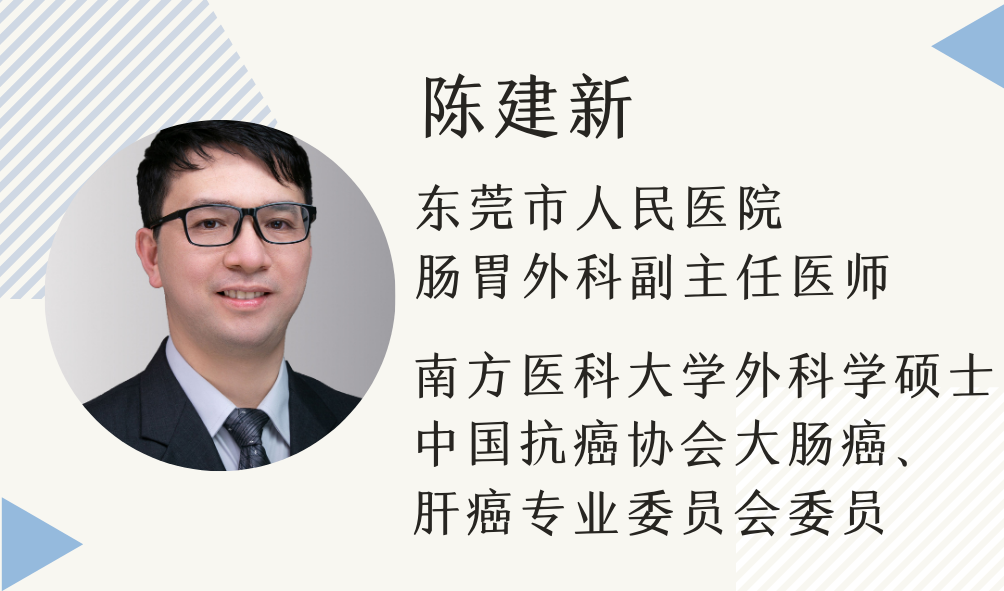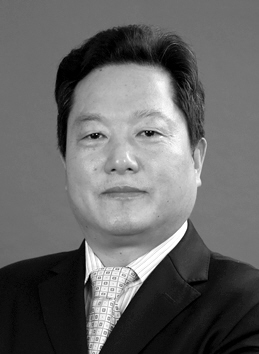恶性胶质瘤的手术治疗
参考文献
1. Albert FK, Forsting M, Sartor K, et al. Early postoperative magnetic resonance imaging after resection of malignant glioma: objective evaluation of residual tumor and its influence on regrowth and prognosis. Neurosurgery, 1994, 34(1):45-60; discussion 60-41.
2. Ammirati M, Vick N, Liao YL, et al. Effect of the extent of surgical resection on survival and quality of life in patients with supratentorial glioblastomas and anaplastic astrocytomas. Neurosurgery, 1987, 21(2):201-206.
3. Bello L, Acerbi F, Giussani C, et al. Intraoperative language localization in multilingual patients with gliomas. Neurosurgery, 2006, 59(1):115-125; discussion 115-125.
4. Bello L, Gallucci M, Fava M, et al. Intraoperative subcortical language tract mapping guides surgical removal of gliomas involving speech areas. Neurosurgery, 2007, 60(1):67-80; discussion 80-62.
5. Bello L, Gambini A, Castellano A, et al. Motor and language DTI Fiber Tracking combined with intraoperative subcortical mapping for surgical removal of gliomas. Neuroimage, 2008, 39(1):369-382.
6. Berger MS, Ojemann GA. Intraoperative brain mapping techniques in neuro-oncology. Stereotact Funct Neurosurg, 1992, 58(1-4):153-161.
7. Berger MS, Deliganis AV, Dobbins J, et al. The effect of extent of resection on recurrence in patients with low grade cerebral hemisphere gliomas. Cancer, 1994, 74(6):1784-1791.
8. Berman JI, Berger MS, Chung SW, et al. Accuracy of diffusion tensor magnetic resonance imaging tractography assessed using intraoperative subcortical stimulation mapping and magnetic source imaging. J Neurosurg, 2007, 107(3):488-494.
9. Bernstein M. Subcortical stimulation mapping. J Neurosurg, 2004, 100(3):365-366; discussion 366.
10. Black PM, Alexander E, 3rd, Martin C, et al. Craniotomy for tumor treatment in an intraoperative magnetic resonance imaging unit. Neurosurgery, 1999, 45(3):423-431; discussion 431-423.
11. Brown PD, Maurer MJ, Rummans TA, et al. A prospective study of quality of life in adults with newly diagnosed high-grade gliomas: the impact of the extent of resection on quality of life and survival. Neurosurgery, 2005, 57(3):495-504; discussion 495-504.
12. Bucci MK, Maity A, Janss AJ, et al. Near complete surgical resection predicts a favorable outcome in pediatric patients with nonbrainstem, malignant gliomas: results from a single center in the magnetic resonance imaging era. Cancer, 2004, 101(4):817-824.
13. Chen CM, Hou BL, Holodny AI. Effect of age and tumor grade on BOLD functional MR imaging in preoperative assessment of patients with glioma. Radiology, 2008, 248(3):971-978.
14. Ciric I, Ammirati M, Vick N, et al. Supratentorial gliomas: surgical considerations and immediate postoperative results. Gross total resection versus partial resection. Neurosurgery, 1987, 21(1):21-26.
15. Claus EB et al. (2005) Survival rates in patients with low-grade glioma after intraoperative magnetic resonance image guidance. Cancer 103: 1227–1233.
16. Du G, Zhou L, Mao Y. Neuronavigator-guided glioma surgery. Chin Med J (Engl), 2003, 116(10):1484-1487.
17. Duffau H, Capelle L, Denvil D, et al. Usefulness of intraoperative electrical subcortical mapping during surgery for low-grade gliomas located within eloquent brain regions: functional results in a consecutive series of 103 patients. J Neurosurg, 2003, 98(4):764-778.
18. Fandino J, Kollias SS, Wieser HG, et al. Intraoperative validation of functional magnetic resonance imaging and cortical reorganization patterns in patients with brain tumors involving the primary motor cortex. J Neurosurg, 1999, 91(2):238-250.
19. Ganslandt O, Stadlbauer A, Fahlbusch R, et al. Proton magnetic resonance spectroscopic imaging integrated into image-guided surgery: correlation to standard magnetic resonance imaging and tumor cell density. Neurosurgery, 2005, 56(2 Suppl):291-298; discussion 291-298.
20. Greenberg MS. Primary brain tumors: Handbook of Neurosurgery. 5th edition. New York: Thieme, 2001, 398-9.
21. Hall WA. The safety and efficacy of stereotactic biopsy for intracranial lesions. Cancer 1998, 82(9):1749-1755.
22. Hentschel SJ, Sawaya R. Optimizing outcomes with maximal surgical resection of malignant gliomas. Cancer Control, 2003, 10(2):109-114.
23. Jaaskelainen J, Randell T. Awake craniotomy in glioma surgery. Acta Neurochir Suppl, 2003, 88:31-35.
24. Keles GE, Lamborn KR, Berger MS. Low-grade hemispheric gliomas in adults: a critical review of extent of resection as a factor influencing outcome. J Neurosurg, 2001, 95(5):735-745.
25. Keles GE, Lundin DA, Lamborn KR, et al. Intraoperative subcortical stimulation mapping for hemispherical perirolandic gliomas located within or adjacent to the descending motor pathways: evaluation of morbidity and assessment of functional outcome in 294 patients. J Neurosurg, 2004, 100(3):369-375.
26. Lacroix M, Abi-Said D, Fourney DR, et al. A multivariate analysis of 416 patients with glioblastoma multiforme: prognosis, extent of resection, and survival. J Neurosurg, 2001, 95(2):190-198.
27. Laws ER, Jr. Resection of low-grade gliomas. J Neurosurg, 2001, 95(5):731-732.
28. Legatt AD. Current practice of motor evoked potential monitoring: results of a survey. J Clin Neurophysiol, 2002, 19(5):454-460.
29. Mason WP, Maestro RD, Eisenstat D, et al. Canadian recommendations for the treatment of glioblastoma multiforme. Curr Oncol, 2007, 14(3):110-117.
30. Morioka T, Mizushima A, Yamamoto T, et al. Functional mapping of the sensorimotor cortex: combined use of magnetoencephalography, functional MRI, and motor evoked potentials. Neuroradiology, 1995, 37(7):526-530.
31. Muragaki Y, Iseki H, Maruyama T, et al. Usefulness of intraoperative magnetic resonance imaging for glioma surgery. Acta Neurochir Suppl, 2006, 98:67-75.
32. NCCN Clinical Practice Guidelines in Oncology-v.1.2008: Central Nervous System Cancers.
33. NICE technology appraisal guidance 121, 2007.
34. Nimsky C, Ganslandt O, Buchfelder M, et al. Intraoperative visualization for resection of gliomas: the role of functional neuronavigation and intraoperative 1.5 T MRI. Neurol Res, 2006, 28(5):482-487.
35. Nimsky C, Ganslandt O, Hastreiter P, et al. Preoperative and intraoperative diffusion tensor imaging-based fiber tracking in glioma surgery. Neurosurgery, 2005, 56(1):130-137; discussion 138.
36. Nimsky C, Ganslandt O, Merhof D, et al. Intraoperative visualization of the pyramidal tract by diffusion-tensor-imaging-based fiber tracking. Neuroimage, 2006, 30(4):1219-1229.
37. Oh DS, Black PM. A low-field intraoperative MRI system for glioma surgery: is it worthwhile? Neurosurg Clin N Am, 2005, 16(1):135-141.
38. Otani N, Bjeljac M, Muroi C, et al. Awake surgery for glioma resection in eloquent areas--Zurich's experience and review. Neurol Med Chir (Tokyo), 2005, 45(10):501-510; discussion 510-501.
39. Pang BC, Wan WH, Lee CK, et al. The role of surgery in high-grade glioma--is surgical resection justified? A review of the current knowledge. Ann Acad Med Singapore, 2007, 36(5):358-363.
40. Rostomily RC, Spence AM, Duong D, et al. Multimodality management of recurrent adult malignant gliomas: results of a phase II multiagent chemotherapy study and analysis of cytoreductive surgery. Neurosurgery, 1994, 35(3):378-388; discussion 388.
41. Senft C, Seifert V, Hermann E, et al. Usefulness of intraoperative ultra low-field magnetic resonance imaging in glioma surgery. Neurosurgery, 2008, 63(4 Suppl 2):257-266; discussion 266-257.
42. Simpson JR, Horton J, Scott C, et al. Influence of location and extent of surgical resection on survival of patients with glioblastoma multiforme: results of three consecutive Radiation Therapy Oncology Group (RTOG) clinical trials. Int J Radiat Oncol Biol Phys, 1993, 26(2):239-244.
43. Stewart LA. Chemotherapy in adult high-grade glioma: a systematic review and meta-analysis of individual patient data from 12 randomised trials. Lancet, 2002, 359(9311):1011-1018.
44. Toda M. Intraoperative navigation and fluorescence imagings in malignant glioma surgery. Keio J Med, 2008, 57(3):155-161.
45. Vives KP, Piepmeier JM. Complications and expected outcome of glioma surgery. J Neurooncol, 1999, 42(3):289-302.
46. Vuorinen V, Hinkka S, Farkkila M, Jaaskelainen J: Debulking or biopsy of malignant glioma in elderly people - a randomized study. Acta Neurochir (Wien), 2003, 145(1):5-10.
47. Whittle IR. Surgery for gliomas. Curr Opin Neurol, 2002, 15(6):663-669.
48. Whittle IR, Pringle AM, Taylor R. Effects of resective surgery for left-sided intracranial tumours on language function: a prospective study. Lancet, 1998, 351(9108):1014-1018.
49. Wu JS, Zhou LF, Chen W, et al. [Prospective comparison of functional magnetic resonance imaging and intraoperative motor evoked potential monitoring for cortical mapping of primary motor areas]. Zhonghua Wai Ke Za Zhi, 2005, 43(17):1141-1145.
50. Wu JS, Zhou LF, Tang WJ, et al. Clinical evaluation and follow-up outcome of diffusion tensor imaging-based functional neuronavigation: a prospective, controlled study in patients with gliomas involving pyramidal tracts. Neurosurgery, 2007, 61(5):935-948; discussion 948-939.
51. 曹勇, 张懋植, 赵继宗, et al. 光动力诊断和荧光指导切除脑恶性胶质瘤15例. 中华外科杂志, 2005, (5):334-338.
52. 杜固宏, 周良辅, 毛颖. 神经导航辅助胶质瘤手术. 中华神经外科疾病研究杂志, 2003, (2):115-118.
53. 杜固宏, 周良辅, 毛颖. 神经导航在胶质瘤手术中的应用. 中华外科杂志, 2003, (3):238-239.
54. 傅先明, 魏祥品, 汪业汉. 神经导航下等体积切除幕上胶质瘤 中国微侵袭神经外科杂志, 2005, 10(4).
55. 高之宪, 王忠诚, 张懋植, et al. 应用神经导航系统对成人幕上胶质瘤手术切除的临床研究. 中华神经外科杂志, 2003, 19(3):163-165.
56. 江涛, 陈新忠, 谢坚, et al. 功能区胶质瘤的术中直接电刺激判断核心手术技术. 中国微侵袭神经外科杂志, 2005, 10(4):148-150.
57. 吴劲松, 毛颖, 姚成军, et al. 术中磁共振影像神经导航治疗脑胶质瘤的临床初步应用(附61例分析). 中国微侵袭神经外科杂志, 2007, (3):105-109.
58. 王伟民, 白红民, 李天栋. 脑功能区胶质瘤手术中的新技术. 中华神经外科杂志, 2007, 23(6):428-431.
59. 吴劲松, 周良辅, 陈伟, et al. 功能磁共振成像定位皮质运动区与术中电刺激运动诱发电位的前瞻对照研究. 中华外科杂志, 2005, (17):1141-1145.
60. 吴劲松, 周良辅, 洪汛宁, et al. 磁共振弥散张量成像在涉及锥体束的脑肿瘤神经导航术中的应用. 中华外科杂志, 2003, 41(9):662-666.
61. 吴劲松, 周良辅, 陈伟, et al. 功能磁共振成像定位皮质运动区与术中电刺激运动诱发电位的前瞻对照研究. 中华外科杂志, 2005, 43(17):1141-1145.
62. 吴劲松, 周良辅, 高歌军, et al. 融合功能磁共振影像的神经导航在脑皮质运动区肿瘤术中的应用. 中华医学杂志, 2004, 84(8):632-636.
63. 辛利平, 孙彦辉, 王蕾, et al. B型超声实时定位在脑胶质瘤切除术中的应用. 中国微侵袭神经外科杂志, 2005, 10(4):180-181.
64. 杨卫东, 孙健, 曾峥. 立体定向影像融合技术引导的脑胺质瘤活检和手术治疗. 中华外科杂志, 2005, 43(21):1421-1422.
65. 姚成军. 术中磁共振在神经外科中的应用及进展. 中华外科杂志, 2006, 44(10):711-713.
66. 张忠, 江涛, 谢坚. 唤醒麻醉和术中功能定位切除语言区胶质瘤. 中华神经外科杂志, 2007, 23(9):643-645.
67. 章翔, 张剑宁. 神经导航显微外科在脑肿瘤手术中的应用. 中华医学杂志, 2002, 82(4):219-211.
68. 赵世光, 滕雷, 李一. 5一氨基乙酰丙酸荧光引导显微手术切除人脑胶质瘤. 中华神经外科杂志, 2007, 23(5):369-372.
69. 朱涛, 张建宁, 李复华. 脑胶质瘤的神经导航手术治疗. 中华神经外科杂志, 2003, 19(5):341-343.















